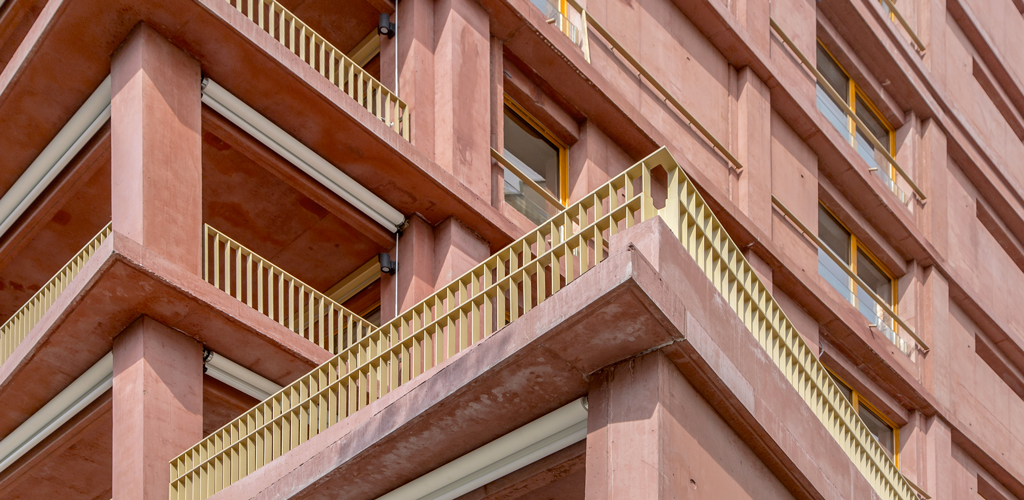Reuilly Barracks’ Plot B1, Charles-Henri Tachon
The former historic site of the Caserne de Reuilly (Reuilly’s barracks) in Paris’ 12th arrondissement has been recently transformed into a one-of-a kind social ensemble. Under the guidance of social housing landlord Paris Habitat, architect Charles-Henri Tachon has completed plot B1 of the project, consisting of 22 apartments. Here he discusses the challenges of this building.
An article by Charles Henri Tachon
Not far, opposite, on a wall: “I’m desperate because I’m invisible”. Written in chalk on the wall of the Pierre & Marie Curie University at Saint-Antoine Hospital, this aphorism, a cry from a lost soul, has a certain resonance with the character of the future buildings of plot B1 of the Caserne de Reuilly.
Visibility or legibility? The semantic nuance is important. With Diderot so nearby, we should try to use the right words to understand one of this project’s challenges.
This small building, linked to the future extension of plot C, will help to form the entrance to a new urban space, that of the Caserne de Reuilly, that is to be given back to the city. This entranceway takes the form of a small square opening onto the rue de Chaligny and leading to the Place d’Armes of the Caserne. The legibility of the square from the rue de Chaligny must therefore depend on the design of the residential buildings on plots B1 and C.
The city is composed of a substrate of housing and activity that makes up its ordinary fabric; to these we add events, such as public facilities. These are especially important because they are open to everyone, and represent the common good. They orient us and serve us, and as such, we grant them a degree of acknowledgement that distinguishes them from other buildings. A residential building, on the other hand, is not intended to stand out from the ordinary fabric of the city. However, in some places, one can expect a treatment that reflects a specific urban situation. This, it seems to us, is the case of plot B1, for the following reasons:
- the building is one of the elements that form the entrance square on rue de Chaligny,
- the building negotiates the transition between a street with an eclectic architectural fabric, and the austerity and power of the barracks buildings,
- the building’s given geometry with its four façades is uncommon in the traditional Parisian streetscape.
Program
The issue of housing affects our daily lives. Although, under certain conditions, people can be content with the familiarity of a cosy apartment with parquet floors, mouldings, a chimney and a security door, we can expect of social housing in new neighbourhoods that it takes part in creating social bonds and interaction.
We believe that this is achieved through the idea of recognition. First of all, there is topographical recognition, that is, the discovery of your neighbourhood by means of what you can see of it from your own home. An example of this is the work we have led in Rue du Nord in Paris (eight homes and four artists’ studios completed in 2010 for the Siemp – Ed.). We are committed to the principle of creating multiple views
(in all apartments, even the smallest) that, in all their diversity, allow people to better understand and appreciate the place in which they live.
Recognition also means acknowledging people’s existence in the city. Each dwelling has its own identity, and can be picked out from the street. This creates a kind of urban social recognition.
The configuration of the plot, with a building with four façades, lets us carry out this research into how to give recognition to both the neighbourhood and its residents.
The second notion to which we are committed is a recurring theme in our work as an agency —that is, the plan. This is an area in which we do not compromise. Good housing is not only spacious housing, it is housing that offers more: more space than surface, more utility and liveability. To expand the space available, one can play with the linkages and flow between rooms to create interior perspectives, to work out the diagonal views, the sequence of views, and effects of transparency and depth that bring richness to the volumes one works with. By these means we can create many routes through the space, and many ways of moving from one room to another.
In our work on housing, we consistently aim to extend balconies and terraces to the point where they are spacious enough to serve as real outdoor rooms. Living outdoors as well as in is certainly one of the expectations that contemporary buildings can meet.
A good home is also, quite simply, a home with natural light in all rooms, including kitchens and bathrooms. Isn’t that obvious?
Where we cannot place bedrooms along the façade, we use transom windows for indirect daylight.
Architecture
The architectural act is eminently plastic in nature. The work we do in the studio focuses on the relationship between a space and the construction of that space. The modes, materials and forces of construction —all these make up the architectural act. The design reacts to, and reflects, a given situation.
Plot B1 must establish the transition from the rue de Chaligny to the Place d’Armes. The building must simultaneously be strong enough to stand alongside the massive architecture of the barracks; lend itself to opening up the heart of the renewed block, and still take its place as a simple residential building. It has to find the right position. One obvious path to follow is thinking about materiality, especially the stone of the barrack buildings. Paying attention to construction as a design element is at the heart of our approach to this project.
Making an urban situation legible, making the life of a city block visible, recognising an environment and placing a new building within a strong historical and architectural framework —obviously, there are a lot of aspirations here!
***
This was the note of intent we gave at the consultation launched by Paris Habitat in the spring of 2014. Today, the building has been handed over. While at first sight it stands out due to its colour, it also fits into a street full of eclectic buildings where there is nonetheless a noticeable expression of structural elements on façades. Although at first sight the building’s colour does not seem very Parisian, it actually alludes to several red brick buildings in the street. Through these references, the new building takes its place in its context, through a delicate balance between standing out and fitting in.
Inside, the 22 residential units were designed on the basis of a cross plan, offering their inhabitants a dual circulation system in a nod to certain features of Haussmannian apartments. This design principle also allows us to take advantage of the building’s square footprint, offering multiple orientations to both the street and the barracks. To the West, on Rue de Chaligny, wide loggias extend the interior space of the apartments outward, as do the terraces from where you can watch the sunset over the Parisian skyline.
We leave it to others to verify whether the intentions we brought to this project are there in this little building, all in red.
This text is an extract from AA 433rd issue – Social housing, a French exceptionalism? – available on our online store.
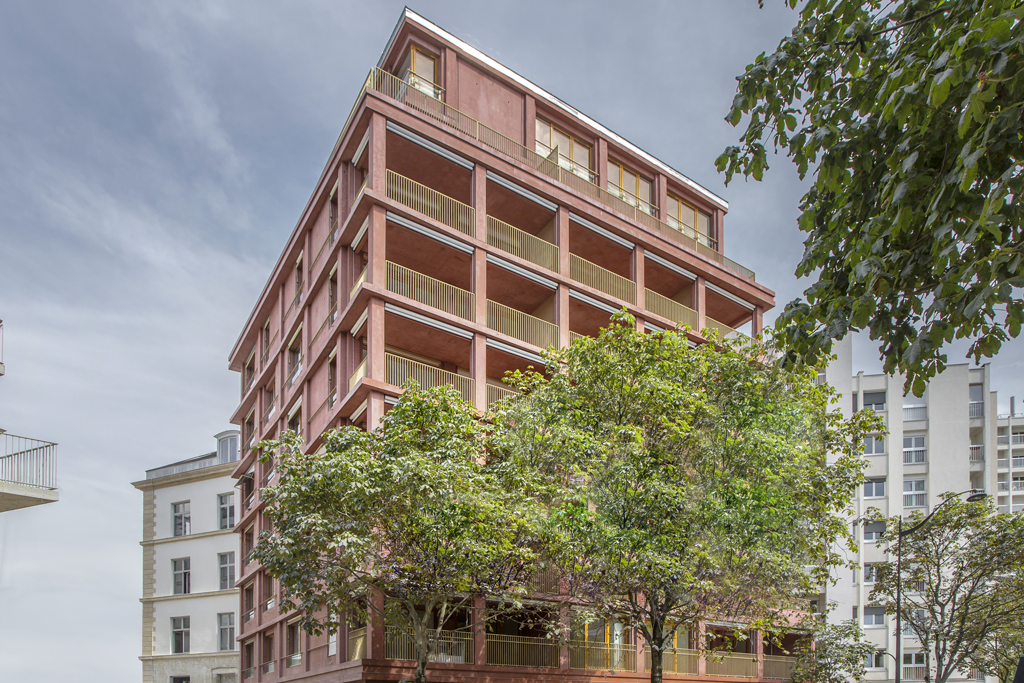
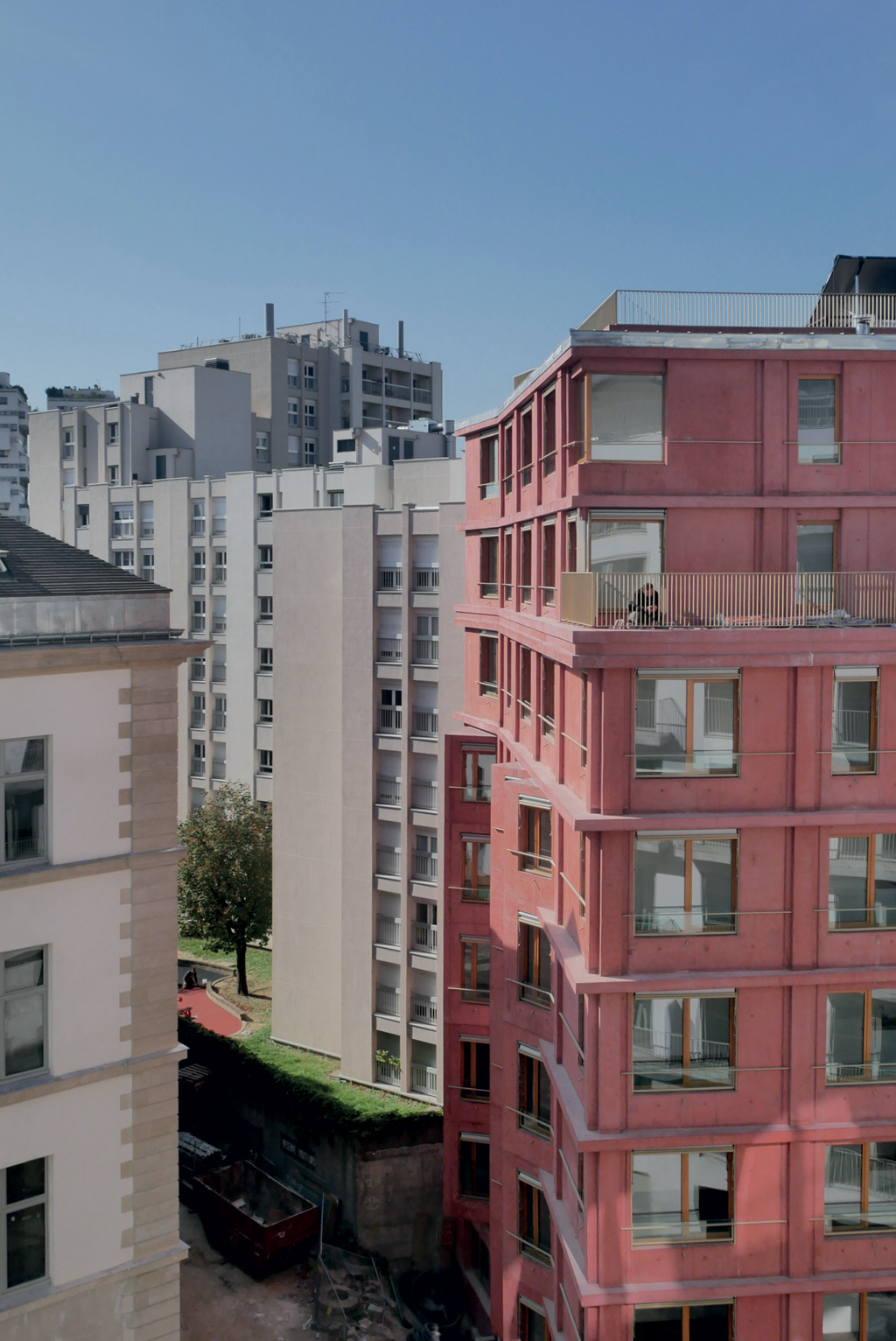
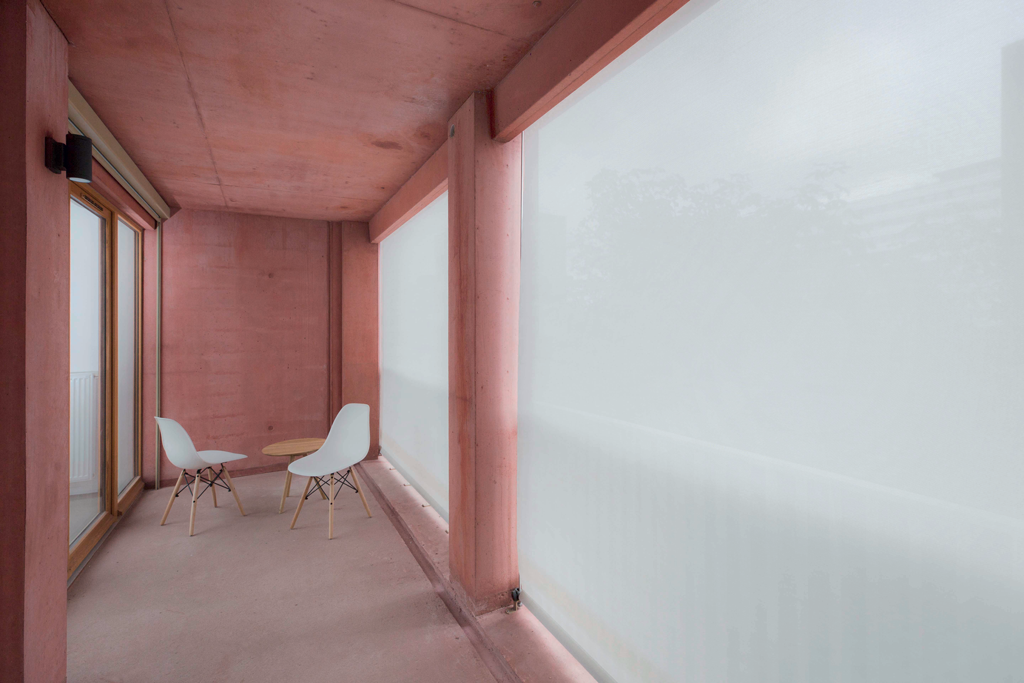
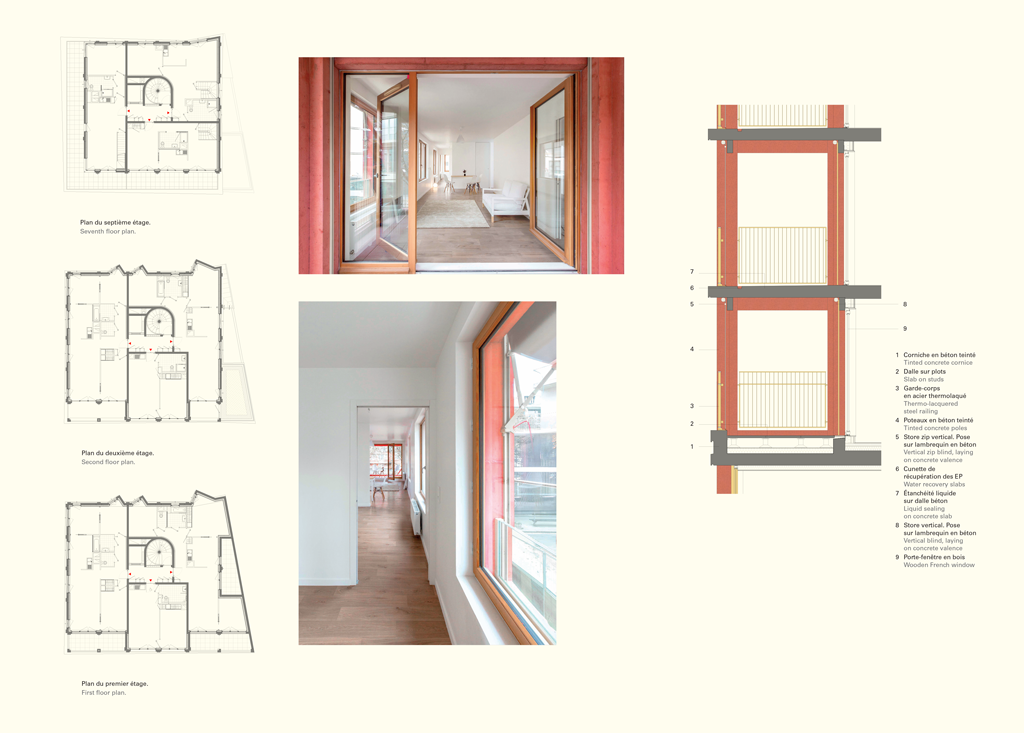

–
Technical informations
Reuilly Barracks, Plot B1
Paris’ 12th arrondissement, France
Project management
Paris Habitat OPH
Architects
Charles-Henri Tachon architecture & paysage
Julien Colom
Joint contractors
ALTO (fluids)
EVP (structure)
VPEAS (economy)
RISK Contrôle (control)
Program
22 social dwellings, premices
Surface
1 640 m2 SDP
Cost
3,1 M euros HT
Livraison
September 2019

